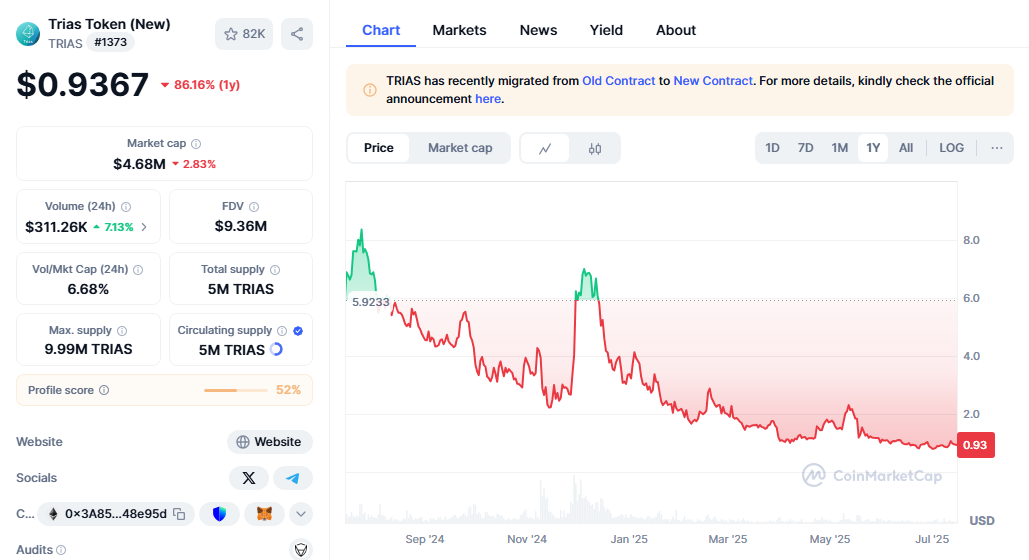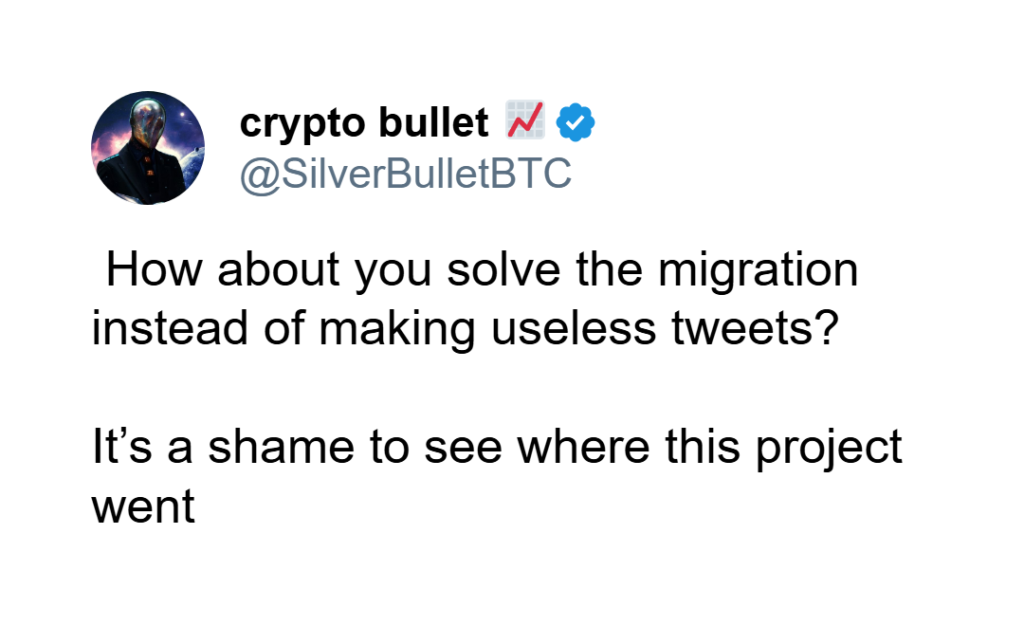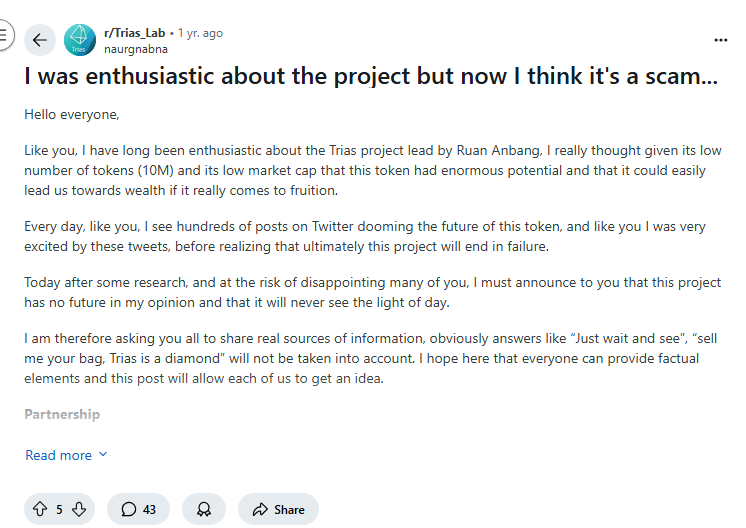
$TRIAS collapse explained: Once near $15, the token now trades under $1 due to exchange delistings, migration issues, and team silence.
Author: Akshat Thakur
Published On: Sat, 19 Jul 2025 21:16:35 GMT
The $TRIAS collapse explained: Once a top AI blockchain project, Trias lost momentum after delistings, migration chaos, and a disappearing dev team.
At one point in early 2024, $TRIAS was among the most hyped AI-related Layer 1s, trading near $15 and backed by a passionate community. It promised to be a foundational blockchain for trustworthy AI execution offering smart contract compatibility across mobile, IoT, and enterprise systems.
By mid-2025, it trades under $1 a brutal 94% drawdown from its peak. Investors are angry, developers are silent, and many are asking the same question: What happened?

The $TRIAS collapse explained more than a price fall it highlights a mix of technical failures, regulatory hurdles, and leadership breakdown.
The decline began in late 2024, when KuCoin one of the main exchanges hosting $TRIAS added a “Special Treatment” (ST) label to the token. This tag usually signals possible regulatory or compliance issues and often precedes a full delisting.
Soon after, KuCoin removed $TRIAS from its platform, triggering a sharp price drop to around $2.60 and sparking panic across the community.
What made it worse:
This event marked the start of a long, silent unraveling.
At the same time, Trias was migrating from its old BEP20/HECO contracts to a new mainnet token standard. In theory, this should have been a smooth upgrade. In practice, it turned into a mess.
Users attempting migration were met with errors on the portal, wallet balances showing zero despite successful transfers, and little to no customer support. Complaints stacked up across Telegram and Reddit, with no formal acknowledgment from the team for weeks.
These issues eroded trust. A significant number of holders couldn’t even access their tokens and new users had no idea whether they were buying the correct contract version.

Perhaps more damaging than the technical issues was the team’s silence during the crisis. The official Telegram became a confusing mix of scam bots, misinformation, and angry users. Moderators either disappeared or avoided direct answers. The project’s X account, once fairly active, went quiet.
Investors felt abandoned. As one long-time holder wrote on Reddit
“I was enthusiastic… now I think it’s a scam. The project will never see the light of day.”
This breakdown in transparency became the turning point. Projects often survive bear markets or bugs. But when communication disappears, so does hope.

While Trias went silent, the broader AI blockchain narrative surged forward. Competing projects like Bittensor ($TAO) and Render ($RENDER) gained traction, partnerships, and price appreciation. These projects actively shipped updates, shared roadmaps, and engaged their communities.
Trias, despite claiming to be a foundational “AI execution layer,” showed no real-world traction, no working partnerships, and no ecosystem growth. There was also no GitHub activity, no developer logs, and no updated roadmap after early 2024.
In the AI L1 race, Trias didn’t just fall behind it completely disappeared from the conversation.
After KuCoin’s exit, no major centralized exchange picked up $TRIAS. As volume shifted to smaller altcoin platforms, liquidity became thin and price discovery broke down. Retail traders moved on, and new buyers couldn’t even find reliable trading venues.
The token became increasingly isolated no listings, no visibility, and no liquidity support. This lack of market presence contributed further to the collapse.
The $TRIAS collapse explained a fall that wasn’t caused by a hack or scam but by abandonment. That’s perhaps even more dangerous: a slow fade-out with no closure.
Still, the tech behind Trias isn’t dead. If the team were to return with:
…there’s a slim chance of recovery. But that would require radical transparency and community re-engagement two things the project hasn’t shown in nearly a year.
Trias had real potential an ambitious Layer 1 with a focus on AI, privacy, and compatibility. But in Web3, execution is everything. And when developers disappear, users don’t just lose money they lose faith.
$TRIAS is not just a failed token but a cautionary tale about overpromising, under-delivering, and going silent when things go wrong.
Without communication, there is no community. And without a community, no project survives no matter how strong the tech sounds on paper.
